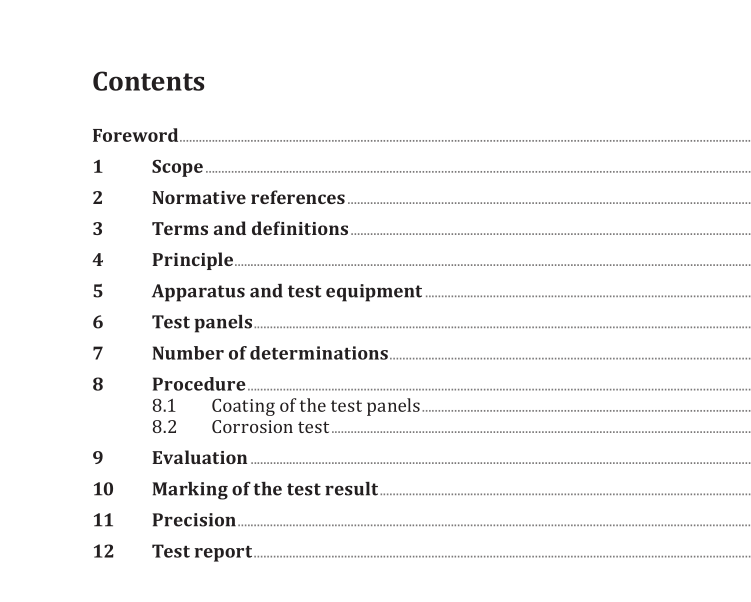ISO 22553-10:2022 pdf download – Paints and varnishes — Electro- deposition coatings — Part 10: Edge protection.
8 Procedure 8.1 Coating of the test panels Fill the tank with the electro-deposition coating material up to about 1 cm below the upper part of the tank and homogenize the coating material, e.g. using a stirring machine with paddle stirrer (minimum diameter 50 mm) at 500 min −1 , so that sufficient tank circulation is visually detectable. Immerse the test panel in the laboratory deposition system and connect the anode and cathode to the current source. Maintain stirring of the electro-deposition coating material with a stirring machine or a magnet stirrer. Set the bath temperature to the temperature specifically required for the product to ±0,5 °C. NOTE 1 Usually the temperature is in the range from 25 °C to 35 °C. Select the deposition voltage and deposition time so that the expected dry film thickness of the electro- deposition coating on the test panel corresponds to the nominal dry film thickness. Increase the voltage to the selected coating voltage (if necessary without series resistor). Maintain that voltage over the selected time. After completion of the deposition process, remove the coated test panel from the tank. Rinse it thoroughly using demineralized water specified in ISO 23321, so that any excess of the electro- deposition coating material (cream coat) is removed. Stove the electro-deposition coating in accordance with its specifications. The stoving temperature shall be the object temperature, not the indicated oven temperature. NOTE 2 The stoving temperature is usually between 140 °C and 180 °C. After the test panel has cooled down, measure the dry film thickness in accordance with one of the methods specified in ISO 2808 at three points of the test panel, and calculate the mean value. 8.2 Corrosion test Carry out a corrosion test with the coated panels, e.g. — ISO 11997-1:2017, Method B; — ISO 11997-3 1) ; — ISO 9227. The corrosion test shall be agreed between the interested parties. NOTE The results are likely to be different depending on which corrosion test is used. 9 Evaluation Carry out the assessment of the five holes of each panel under defined conditions as specified in ISO 13076 and evaluate the defects visually as specified in ISO 4628-1. The rating of the edge corrosion on each of the five holes of each of the three panels shall be in accordance with Table 1.
10 Marking of the test result The tested product may be marked with a designation code that summarizes the test result. The marking shall be stated in the following form: Number of this document — Rating EXAMPLE Tested in accordance with ISO 22553-10, Rating 1 ISO 22553-10—1 11 Precision No precision data are currently available. 12 Test report The test report shall contain at least the following information: a) all details necessary for the identification of the tested coating material; b) a reference to this document, i.e. ISO 22553-10; c) the bath voltage; d) the bath temperature; e) the deposition time: adjustment time and holding time, in seconds; f) the stoving temperature and time; g) the film thickness; h) the corrosion test used; i) the test results in accordance with Clause 9; j) any agreed or other deviation from the specified test method; k) any unusual observation (anomalies) observed during the test; l) the date of the test.
ISO 22553-10:2022 pdf download – Paints and varnishes — Electro- deposition coatings — Part 10: Edge protection






